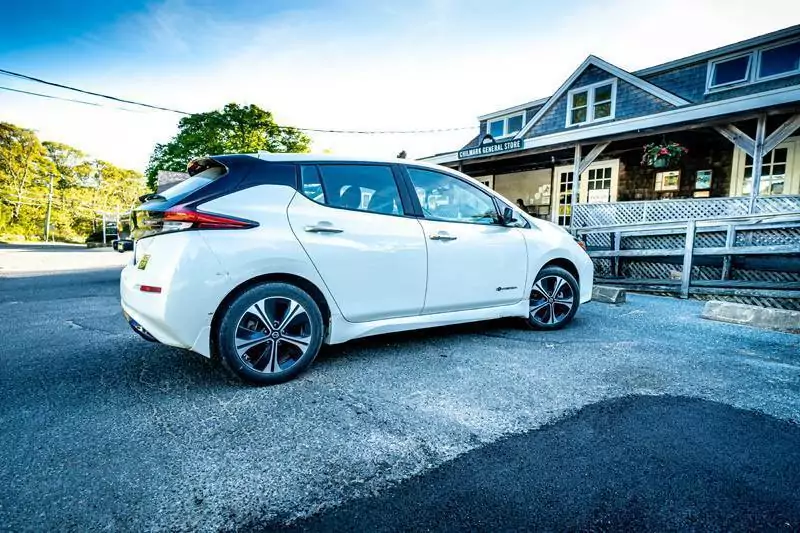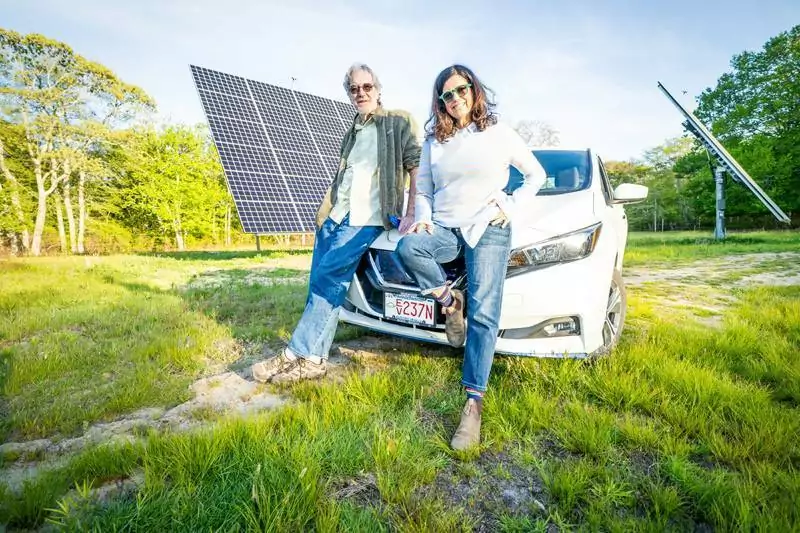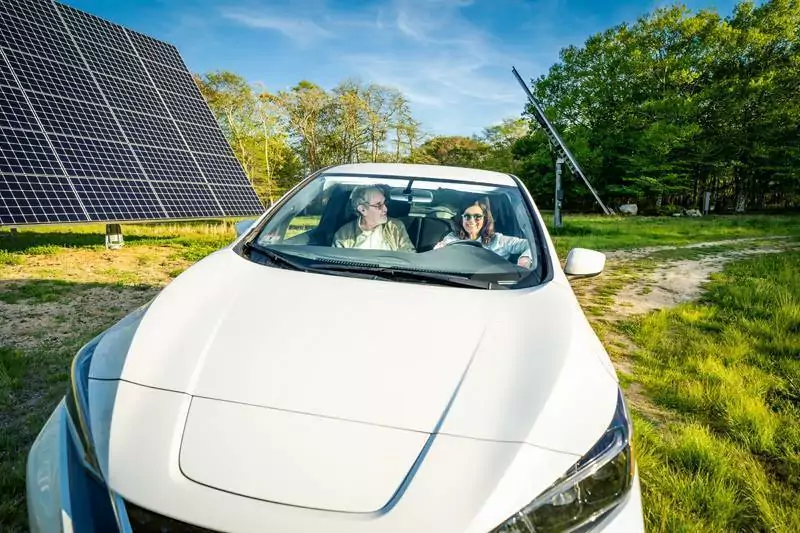For our second issue of Bluedot Living I’m taking a cruise with environmental activist Laurie David in her Nissan Leaf. Before working full-time on environmental and political issues, Laurie worked as a talent coordinator in the entertainment business, which is where she met her first husband, Larry David.
But her breakthrough moment came in 2006 when she was the executive producer for the film An Inconvenient Truth, starring Al Gore, for which she received an Academy Award. “Yesterday was the 15th anniversary of the film,” Laurie told me when we went for our ride. “Fifteen years ago many people had not acknowledged that climate change was real or that humans were causing it. Because of that movie, every magazine and newspaper was doing a story about it. It shifted the entire paradigm on the issue.”
More recently she’s produced social action documentaries including The Last Animals, Fed Up and The Biggest Little Farm. She’s written two popular cookbooks, The Family Dinner and The Family Cooks, and most recently she’s co-written Imagine It! A Handbook for a Happier Planet, with Heather Reisman (excerpted in this magazine, on page TK). Laurie and her husband, Bart Thorpe, now live full-time on their regenerative farm in Chilmark.
I met Laurie at the Chilmark Store. She was wearing a pair of jeans, a striped pullover, and a stylish pair of green sunglasses. “The frames for these glasses,” she said, “are made from about a dozen plastic water bottles.” When Laurie was researching Imagine it! she met a woman in Flint, Michigan who was horrified that thousands and thousands of plastic water bottles were brought in because it was unsafe to drink the city water but there was no good plan for disposing of the bottles.

“So the girl started making the bottles into frames,” Laurie said. “She started a company called Genusee and she ended up hiring all these fantastic people.”
The plan for our “cruise” was to drive around up-Island a bit then make our way to the solar farm at Laurie and Bart’s house. But before we get to that, in the interest of full disclosure, I should tell you that I once stole Laurie’s dog.
It was all innocent enough. I was driving down the road where I live and saw a dog I mistook for my neighbor’s dog, walking along the side of the road. It was cold and getting dark so thinking I would do my neighbor a favor, I put the dog in the car and brought him to his house, only to be greeted by my neighbor’s real dog barking at me from behind the door. So much for being a Good Samaritan.
The plan for our “cruise” was to drive around up-Island a bit then make our way to the solar farm at Laurie and Bart’s house. But before we get to that, in the interest of full disclosure, I should tell you that I once stole Laurie’s dog.
I had to run an errand and my neighbor agreed to hold onto the dog until I got back. When I returned a half an hour later, my neighbor said, “I think this dog belongs to Laurie David who was visiting some people up the street. And his name is Theo.” How my neighbor figured all this out will always remain a dark secret to me. But when I told Laurie and Bart that I was the guy who took her dog, we all had a good laugh.
On our way to the solar farm Laurie told me how she initially got involved as an environmentalist. “When I was pregnant, I became super aware of what I was eating and what I should be drinking,” she said. “I was responsible for the child growing inside of me and that’s when I had the ‘Ah Ha’ moment. I didn’t want to be exposed to chemicals and wanted only nutritious food not laced with insecticide.”
Laurie’s car was a new Nissan Leaf, a sharp looking compact five-door hatchback. Laurie and Bart like it so much they got two of them and are quick to proselytize about it to their friends.
Laurie’s car was a new Nissan Leaf, a sharp looking compact five-door hatchback. Laurie and Bart like it so much they got two of them and are quick to proselytize about it to their friends. “It’s a great car and it’s affordable,” Laurie said, “around $30,000. It saves people money and it feels fantastic driving it.” While it’s not a rocket ship like Hasoni Pratts’ Tesla Model X that I wrote about last issue, it’s still fun to drive. “When you drive an electric car and then go back to an old internal combustion car,” Laurie said, “it feels like you’re going back to the Fifties. This is the future!
“I love that I never have to go to the gas station and, driving around the Island, I can go days without recharging.” Nissan claims that it can go up to 225 miles on a single charge.
“If you’re buying a new car you have to consider getting an electric vehicle,” Laurie said. “They can do so much to help with the climate and keep emissions out of the air, and especially now that manufacturers like GM and Volvo are pledging to be all electric in a few years, as customers we have to meet them halfway. It’s critically important.”
Driving around Chilmark we had a chance to talk about Laurie’s new book, Imagine It! A Handbook for a Happier Planet, I told Laurie that I really enjoyed her book. It covered all the different ways we’re leaving a carbon footprint including plastics, clothing, food, chemicals, paper, water, and transportation. And I liked that at the end of each section it gave the readers ways they could do something about climate change and become an advocate.

“Everything I know is in Imagine It!” Laurie said, “If you want to know what I know, read the book … it’s the way to have a healthier life.” I asked Laurie if she had fun writing the book.
“I learned so much writing it, it was fun because I feel compelled to share what I know with people. It was also a lot of work because my co-writer, Heather Reisman who founded and owns Indigo Books lives in Canada and was only available to work at night so that’s when we did it. It’s pretty much how I spent the pandemic.”
At this point we were approaching Laurie’s house and she told me a little about her farm. “You know, I never imagined myself living on a regenerative farm,” she said. “It’s a small farm, we’re just lady and gentlemen farmers, but the ultimate is to have a place to grow our own food and of course that’s also all tied in with composting. Nothing is wasted.”
Bart does the farming and each year they’re able to donate food to Island schools and the Food Pantry. “We grow tons of food,” Laurie said. They also have a fair amount of livestock, chickens (Laurie gave me some organic eggs), cattle, sheep, a goat, and three Sicilian donkeys.
We turned into a dirt road that led up to Laurie’s house and took a left to what Laurie told me was the solar farm. Spread across the field were 24 big solar panels which had enough output to support the electricity needs for about 50 houses. They donate to people who would like to use solar power but don’t have their own panels.
All in all it was a rather surreal experience. I was surrounded by a whole lot of solar panels slowly and silently tracking the sun. There was the buzz of several beehives clustered in the corner of the field. And I could have sworn I heard the wistful bark of a dog in the distance.
“Could that be you, Theo?” I thought to myself.


Reading this info-story and the twin Nissan Leafs, had me envisioning a moment in the near future where only electric vehicles will be allowed on The Vineyard. Of course, there would need to be exceptions beginning with any and all work vehicles, heavy machinery, etc. But for the average year-rounders an electric family car would be the one and only permissible mode of transportation. Island living, particularly on The Vineyard, appears to be a near-perfect solution to reducing the carbon imprint as 225 miles on one charge within the confines of a sea surround is pretty nice to imagine on a grander scale, especially if one recalls any July-August lines at filling stations .Sheepishly, I must admit to being a “latecomer” to practical enviro-conscious living on the island and elsewhere, but we all gotta start somewhere, eh?
I would love to see a movement on the island to ban gas powered landscape equipment. The whole landscaping business on the island is a wasteful racket. Companies force clients to sign contracts for minimum house visits, and crews show up whether or not the grass needs mowing. Many times I see them mowing bare dirt and blowing around non-existent clippings. It’s not only wasteful, but the never ending noise is really annoying. Our neighbors landscapers show up twice a week ( even during drought conditions) and use 4 gas blowers at once. It’s appalling.